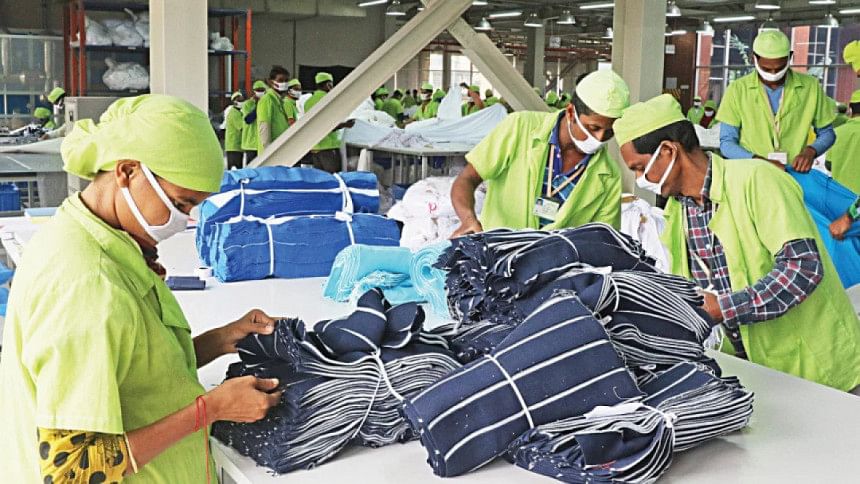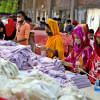Garment exports to US dropped 25% last year

Garment exports to the US, the biggest market for Bangladeshi products, declined by around 25 percent year-on-year to $7.28 billion last year for a slowdown in imports by American fashion retailers and brands due to high inflationary pressure.
Last year, overall imports of textile and garment items by the US declined by 20.51 percent to $104.95 billion, according to data from the Office of Textiles and Apparel (OTEXA) of the US.
The US saw garment imports alone decline by 22.05 percent to $77.84 billion.
China, the top apparel supplier worldwide, also saw a fall in textile and garment exports to the US, declining 22.86 percent to $25.19 billion.
Its garment exports to the US alone declined by 24.98 percent to $16.31 billion.
In 2022, garment exports from Bangladesh to the US was over 50 percent higher than in 2021, thanks to pent-up demand facilitated by the recovery of the global supply chain from the severe fallouts of Covid-19.
This also led to inventory remaining unsold, which American retailers focused on clearing last year and for which imports were reduced. In other words, Bangladesh's garment exports went through a process of adjustment to reach equilibrium.
Kutubuddin Ahmed, chairman of Envoy Legacy, said sales in US stores are on the decline but exports will grow in the near future.
"The American buyers are making a lot of inquiries now compared to last year," he said.
Faruque Hassan, president of the Bangladesh Garment Manufacturers and Exporters Association (BGMEA), highlighted the overall decline in garment imports by the US last year.
"High inflation caused low consumer spending last year, so the retailers imported less," he said.
Moreover, there was a high amount of unsold inventory in stores but it started to decline as inflation eased from the middle of last year. The US will also see its interest rate cut this year, he said.
"Sales during the festival seasons, such as Christmas, was very good as old inventory was reduced, giving rise to the prospects of an increase in the export of Bangladeshi items this year," Hassan said.
Matthew Shay, president and CEO of National Retail Federation (NRF), the largest retail trade association in the US, in a statement last week said retailers are coming off a successful holiday season.
Sales growth is expected to be around 3 percent to 4 percent, reflecting a more sustainable rate of growth than seen during the pandemic years, he said.
The growth reflects the fact that retailers were accommodating the expectations of consumers and demonstrates the underlying strength of the US economy, he said.
"I think the things that drive consumer spending are the unemployment rate and wage growth," Shay said.
"And right now, the unemployment rate is very low and wage growth remains steady, so consumer choices are driven by these factors," he further remarked.
The future will also depend on how good of a balancing act the Federal Reserve can manage with interest rates, alongside other external factors such as global geopolitical conflict and challenging elections in the US, said Shay.
In conversations with retail CEOs at the event, he said many pointed out the high customer expectations as they will continue seeking value, as well as being deliberate in their spending.
"I think in the coming year, there's a recognition that there will be a premium on execution, and those that execute at a high level will be successful. Those that don't, maybe won't be able to keep up with the dynamism in the industry," Shay said.

 For all latest news, follow The Daily Star's Google News channel.
For all latest news, follow The Daily Star's Google News channel. 





Comments